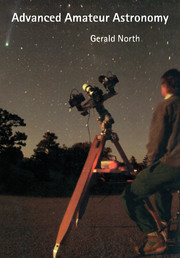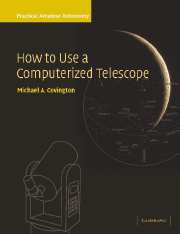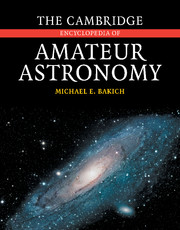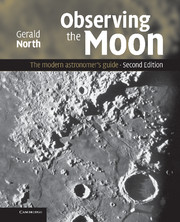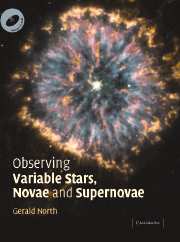Advanced Amateur Astronomy
This book, first published in 1997, is for amateur astronomers and telescope users who want to move beyond elementary stargazing to more challenging projects. Written by an accomplished amateur astronomer, this indispensable guide to more advanced work is packed with information and lucid explanations. The first section of the book sets out the fundamental principles of practical astronomy, with chapters on telescope optics, the atmosphere, telescope hardware, astrophotography and electronic imaging. This knowledge is then applied to the full range of celestial bodies accessible by telescope: the solar system, stars and galaxies. For those users who want to move to even greater challenges, chapters on photometry, spectroscopy and radio astronomy bring observational astronomy to a level where data of real scientific value can be acquired.
- The nuts and bolts of real observing, not the hot air of theory
- Detailed instructions enable the average telescope user to improve skills
- Includes the latest topic of electronic imaging
Reviews & endorsements
"...many astronomers will welcome the updated second edition of Gerald North's Advanced Amateur Astronomy...The sections on telescopic hardware, adjustment and astrophotography are now joined by a chapter on electronic imaging, and the book has a superb introduction to the types of astronomical object most suited to amateur investigation." New Scientist
"This book offers practical exercises and advice for the amateur astronomer looking to move beyond the basics of backyard stargazing and into the world of data gathering." Lunar & Planetary Information Bulletin
"North ably guides casual stargazers through all of the many possibilities for moving to the next level." Science Books & Films
Product details
September 1997Paperback
9780521574303
416 pages
244 × 170 × 22 mm
0.66kg
193 b/w illus.
Available
Table of Contents
- Preface
- Acknowledgements
- 1. Telescope optics
- 2. Atmosphere, seeing, magnification and eyepieces
- 3. Telescope hardware and adjustments
- 4. Astrophotography with the camera
- 5. Astrophotography through the telescope
- 6. Electronic imaging
- 7. The Moon
- 8. The terrestrial planets
- 9. The gas-giant planets
- 10. Comets, asteroids, meteors and aurorae
- 11. The Sun
- 12. Variable stars and novae
- 13. Methods of photometry
- 14. Double stars, star clusters, nebulae, galaxies and supernovae
- 15. Spectroscopy
- 16. Radio astronomy
- 17. Further information
- Appendix: useful formulae.

